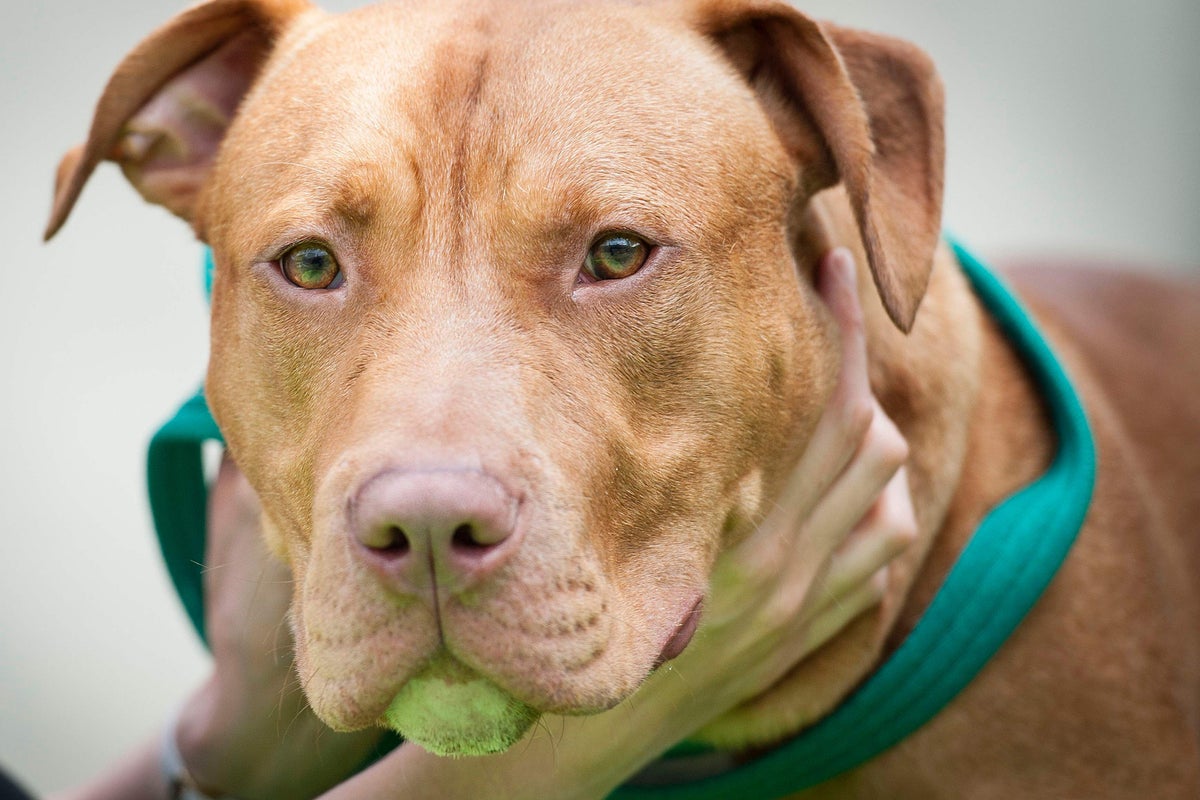
Owners of XL bully dogs have just hours left to apply for certificates of exemption if they wish to keep their pets before a ban on the breed comes into force.
From 1 February, it will be a criminal offence to own an XL bully in England and Wales without a certificate. Applications must be submitted by midday on Wednesday.
It follows restrictions which came into force at the end of last year which mean the dogs must be kept on a lead and muzzled in public.
Breeding, selling or abandoning the dogs also became illegal as of 31 December. Here is a deeper look into what the move will mean for dog owners.
American XL Bullies have been linked to 40 per cent of more than 800 attacks tracked by campaign group Bully Watch— (Getty Images/iStockPhoto)
What will happen if you own an American XL bully dog?
To qualify for an exemption certificate, owners must prove their XL bully had been neutered by 30 June 2023.
If owners have a pup which is less than a year old on Wednesday, they must be neutered by the end of 2024, and evidence that they have done so must be provided.
As well as neutering their animals, XL bully owners seeking an exemption must also pay an application fee, hold third party public liability insurance for their pets, and ensure the dogs are microchipped.
Since 31 January, owners of the animal were required to have the dogs neutered and muzzled and on a lead when in public.
What are American XL bully dogs?
American kennel clubs have different definitions of what an American XL bully is but it is not recognised as a specific breed by the UK’s The Kennel Club, dog expert witness Colin Tennant told the PA news agency.
The American Bully Kennel Club defines the American XL bully as a crossbreed of the American pit bull terrier, olde English bulldogge, English bulldog and the American bulldog, while the American Dog Breeders Association defines it as a crossbreed of the American Staffordshire terrier and the American pit bull terrier.
Why are they not defined as a breed in the UK?
The dog is not recognised as a specific breed by The Kennel Club.
It could be hard to define and some fear a ban could inadvertently outlaw a range of other dogs.
How does identifying a dog as a banned breed work?
Police or dog experts can judge the type of dog.
Mr Tennant said this is done with lists of characteristics, so it can be classed as a banned breed if it ticks the boxes, even if the dog is crossbred with a breed which is not banned.
Will this make it difficult to enforce a ban?
Ministers were quick to acknowledge that the details of the ban, and the exact definition of the breed, would need to be worked out.
But officials appear confident that a consensus can be reached that will target a ban specifically on the American XL bully.
The chief veterinary officer said officials would work with vets, dog experts, the police and NGOs to find an “appropriate breed definition”.
XL Bullies will join the list of banned breeds by the end of the year, Rishi Sunak says— (Getty Images)
Which dogs are already banned in the UK?
In the UK, it is against the law to own certain types of dog.
According to the government website, these are the pit bull terrier, Japanese Tosa, dogo Argentino and fila Brasileiro.
It is also against the law to sell a banned dog, abandon a banned dog, give away a banned dog, and breed from a banned dog.
What happens if you own a banned dog?
The police or local council dog warden can take it away, even if it is not acting dangerously and there has not been a complaint made.
A police or council dog expert will judge what type of dog it is and whether it is (or could be) a danger to the public. The dog will then either be released or kept in kennels while the police (or council) apply to a court.
It is the owner’s responsibility to prove the dog is not a banned type. If it is proved, the court will order the dog to be returned. If the owner cannot prove it (or they plead guilty), they will be convicted of a crime.
The owner can get an unlimited fine or be sent to prison for up to six months (or both) for having a banned dog against the law. The dog will also be destroyed.
If the dog is banned but the court thinks it is not a danger to the public, it may put it on the Index of Exempted Dogs and let the owner keep it.
When the ban comes into force, owners will need to prove their dog is not a banned type— (Getty Images)
The owner will be given a certificate of exemption, which is valid for the life of the dog, and comes with a number of conditions.
The dog must be neutered, microchipped, kept on a lead and muzzled at all times when in public, and kept in a secure place so it cannot escape.
The owner must take out insurance against the dog injuring other people, be aged over 16, show the certificate of exemption when asked by a police officer or council dog warden, either at the time or within five days, and let the Index of Exempted Dogs know if the owner changes address, or the dog dies.







